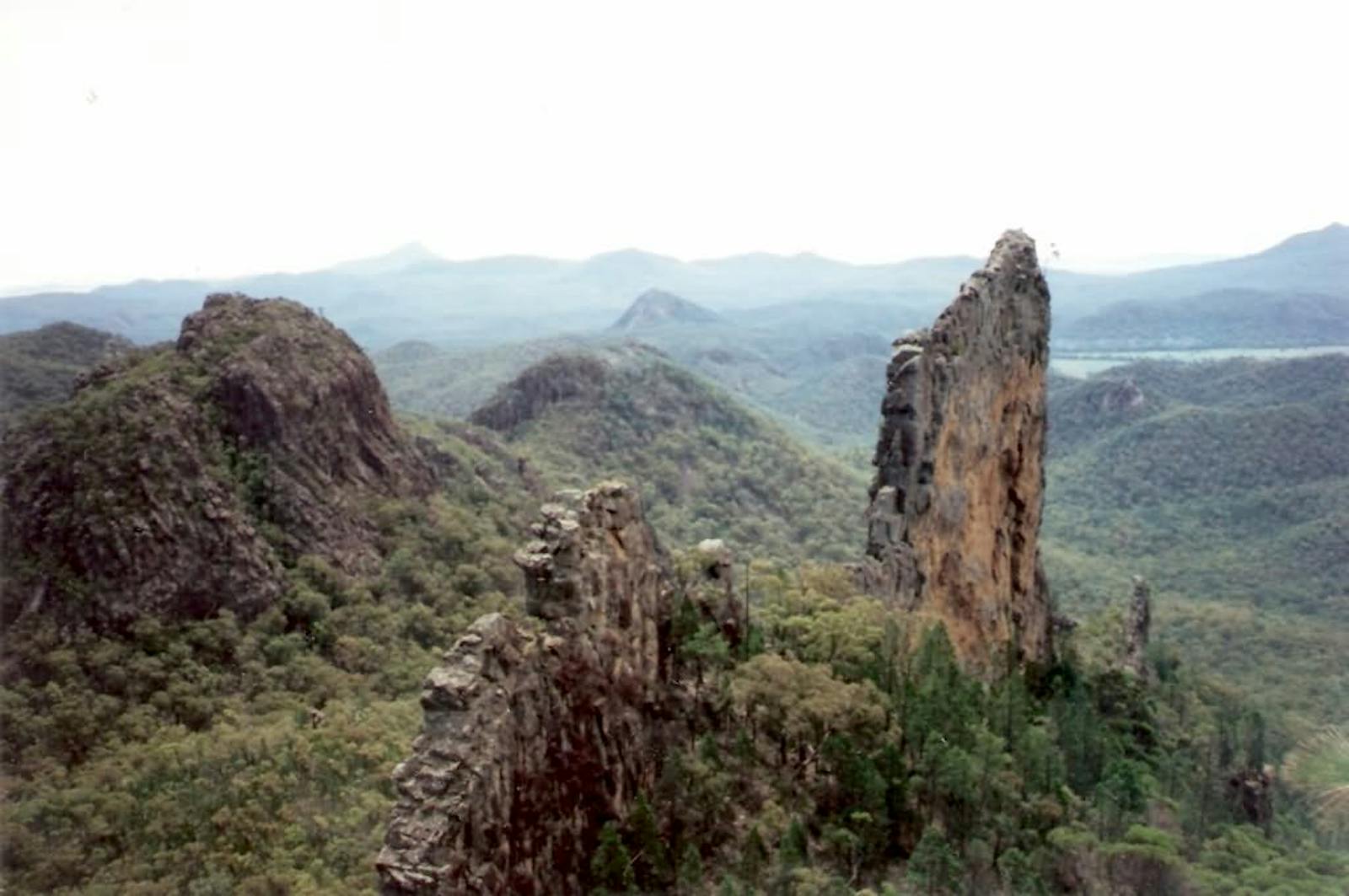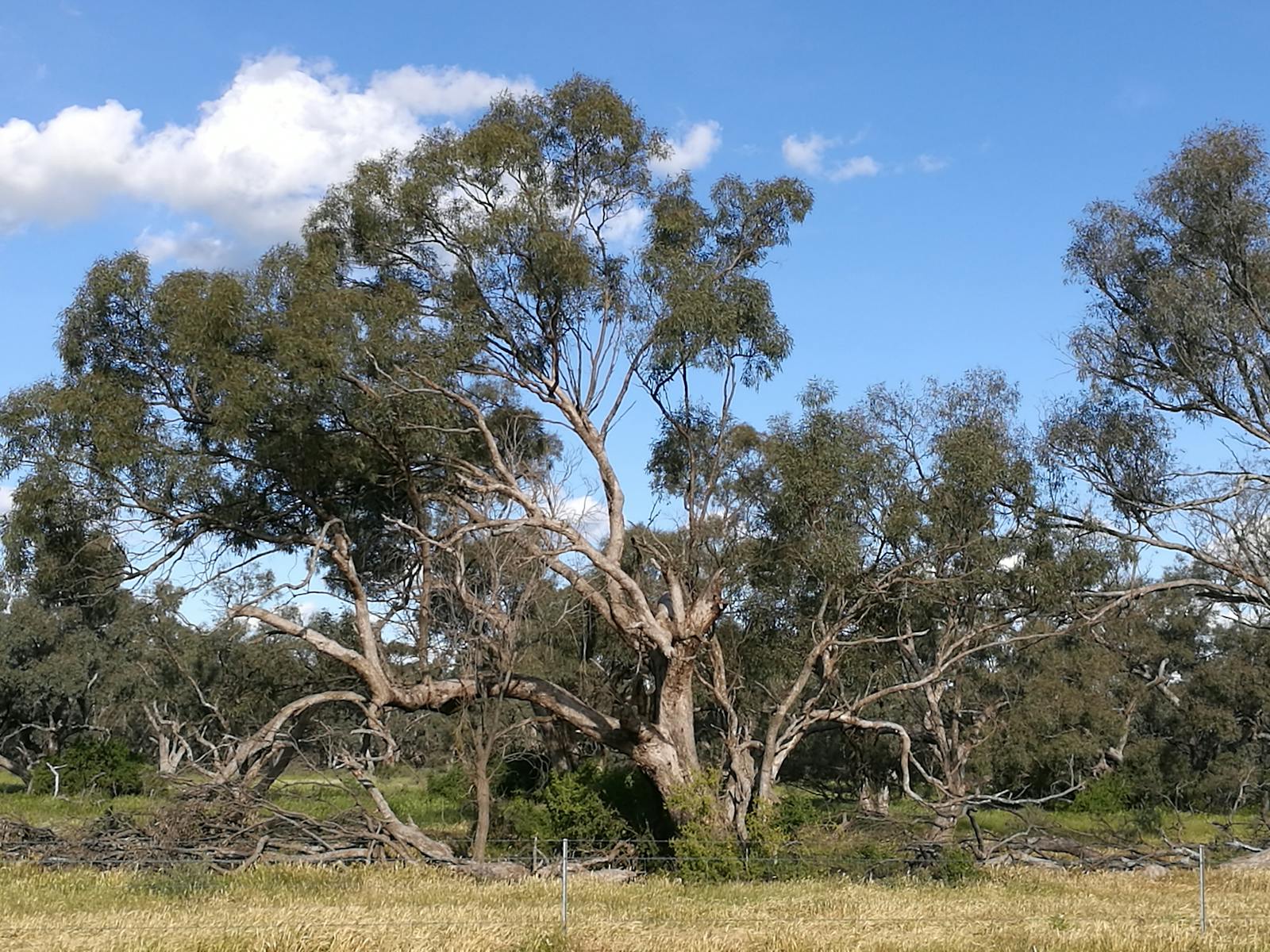Southeast Australia Temperate Savanna
The ecoregion’s land area is provided in units of 1,000 hectares. The conservation target is the Global Safety Net (GSN1) area for the given ecoregion. The protection level indicates the percentage of the GSN goal that is currently protected on a scale of 0-10. N/A means data is not available at this time.
Bioregion: East Australian Mediterranean Woodlands & Temperate Savannas (AU4)
Realm: Australasia
Ecoregion Size (1000 ha):
27,869
Ecoregion ID:
192
Conservation Target:
47%
Protection Level:
1
States: Australia
Locals call the bridled nailtail wallaby wallaby (Onychogalea fraenata) ‘flash jack’ due to its muscular thighs. This muscle-bound, bounding marsupial is an iconic species of this transition ecoregion between the moist eastern coastal margin and the arid central interior of the continent.
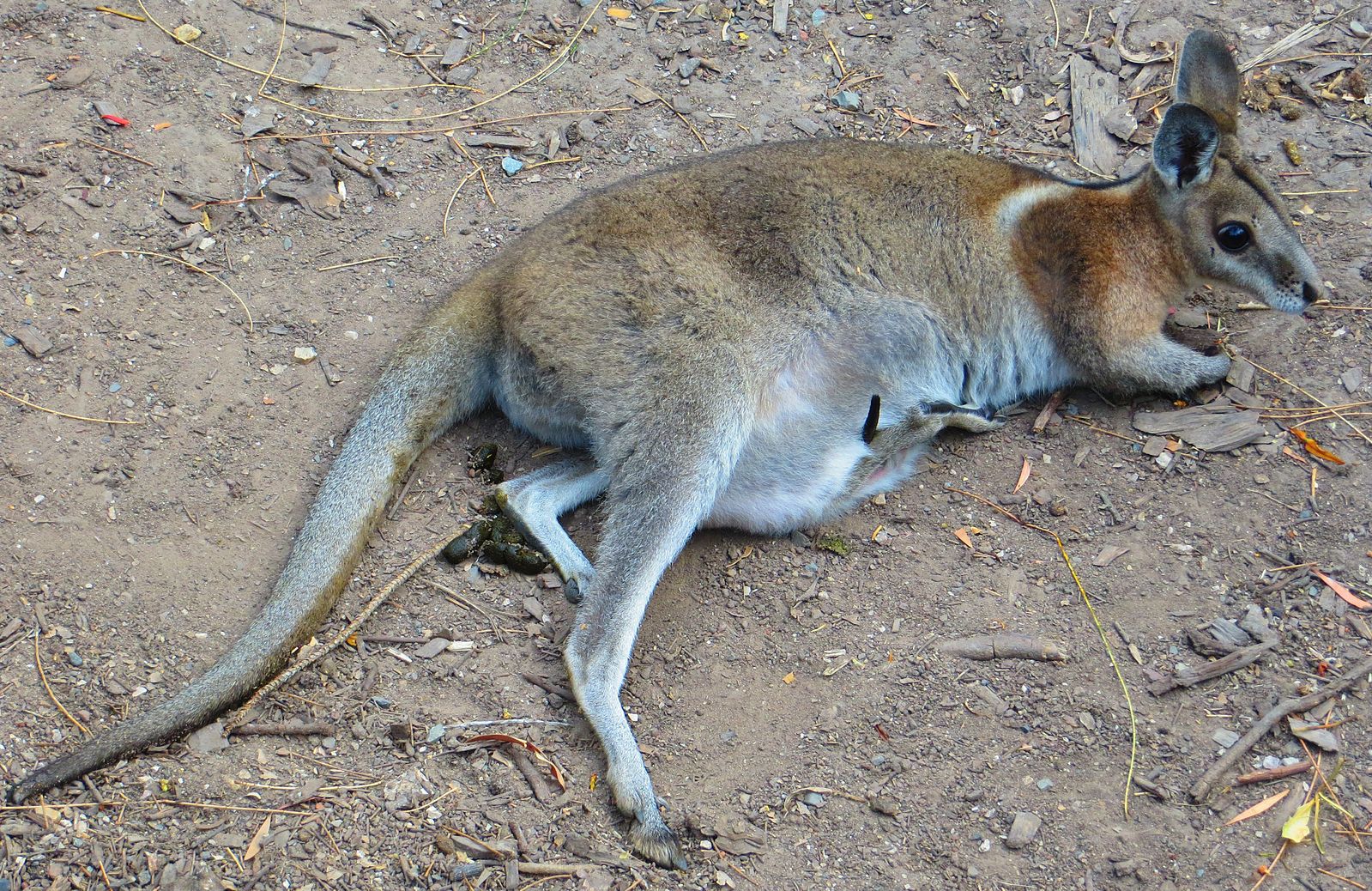
The flagship species of the Southeast Australia Temperate Savanna ecoregion is the bridled nailtail wallaby. Image credit: Courtesy of Diver Dave, Flickr
Grassy open woodlands, with coolibah trees (Eucalpytus microtheca) and Mitchell grass (Astrebla lappacea) dominated northern areas. Mitchell grass and red river gums (E. camaldulensis) line the Darling River in riverine woodlands. The southern regions support ‘layered woodlands’ with low trees, such as narrow-leaved ironbark (E. crebra), poplar box (E. populnea), and silver-leaved ironbark (E. melanophloia) and tall shrubs with a rich assemblage of plants, with Acacia, Callitris, and Casuarina. The ecoregion supports some smaller pockets of mallee, woodlands more characteristic of the Mediterranean-climate ecoregions to the southeast.
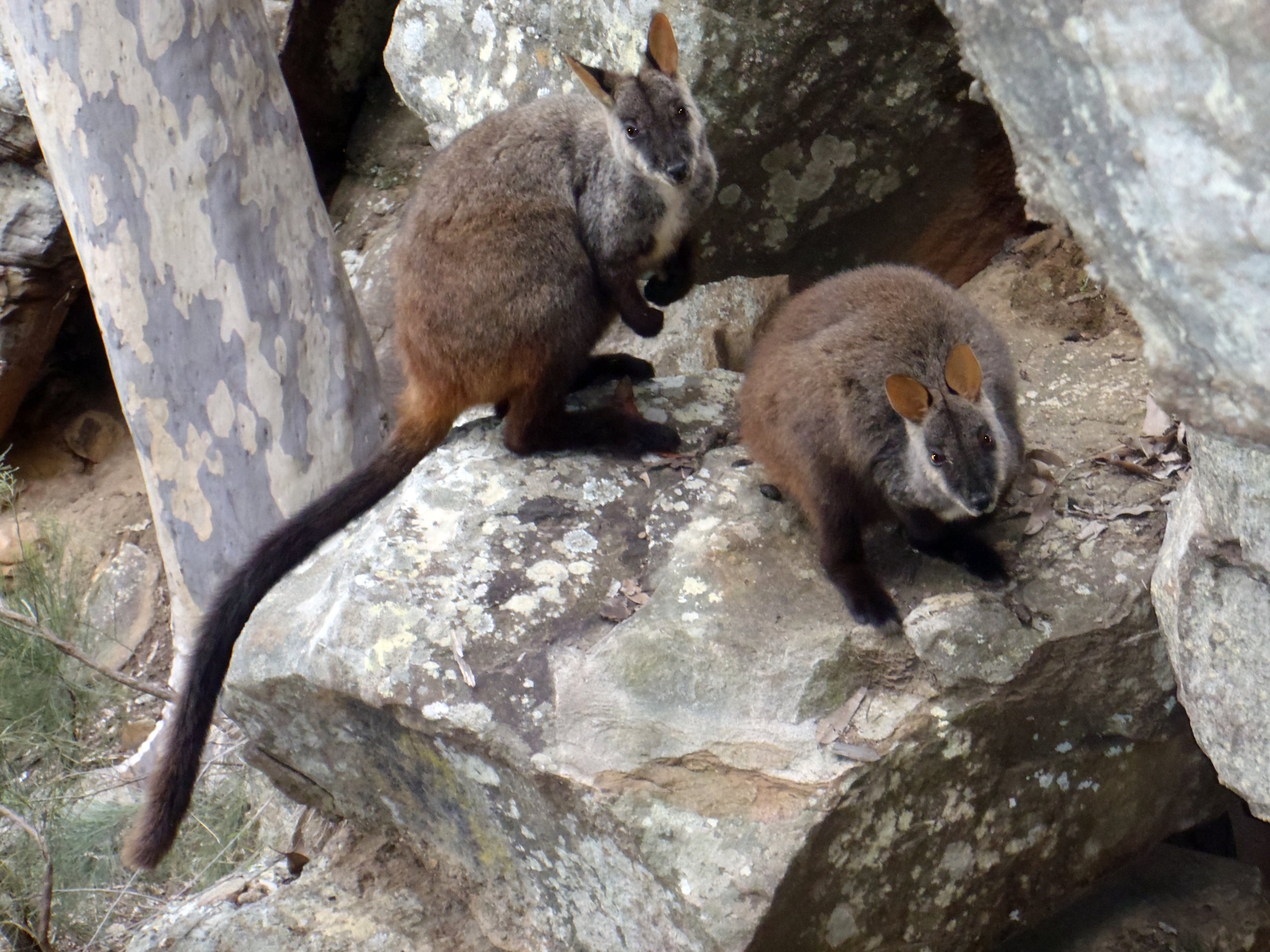
Brush-tailed rock-wallabies. Image credit: Mark Hodgins, Creative Commons
Several kangaroo species and the echidna occur here along with the threatened kultarr (Antechinomys laniger), spotted-tailed quoll (Dasyurus maculatus), bridled nailtail wallaby (Onychogalea fraenata), and brush-tailed rock-wallaby (Petrogale penicillata). The blending of diverse habitats and regional faunas contribute to a rich avifauna, with species including painted honeyeater (Grantiella picta), diamond firetail (Stagonopleura guttata), malleefowl (Leipoa ocellata), plains-wanderer (Pedionomus torquatus), and the swift parrot (Lathamus discolor).
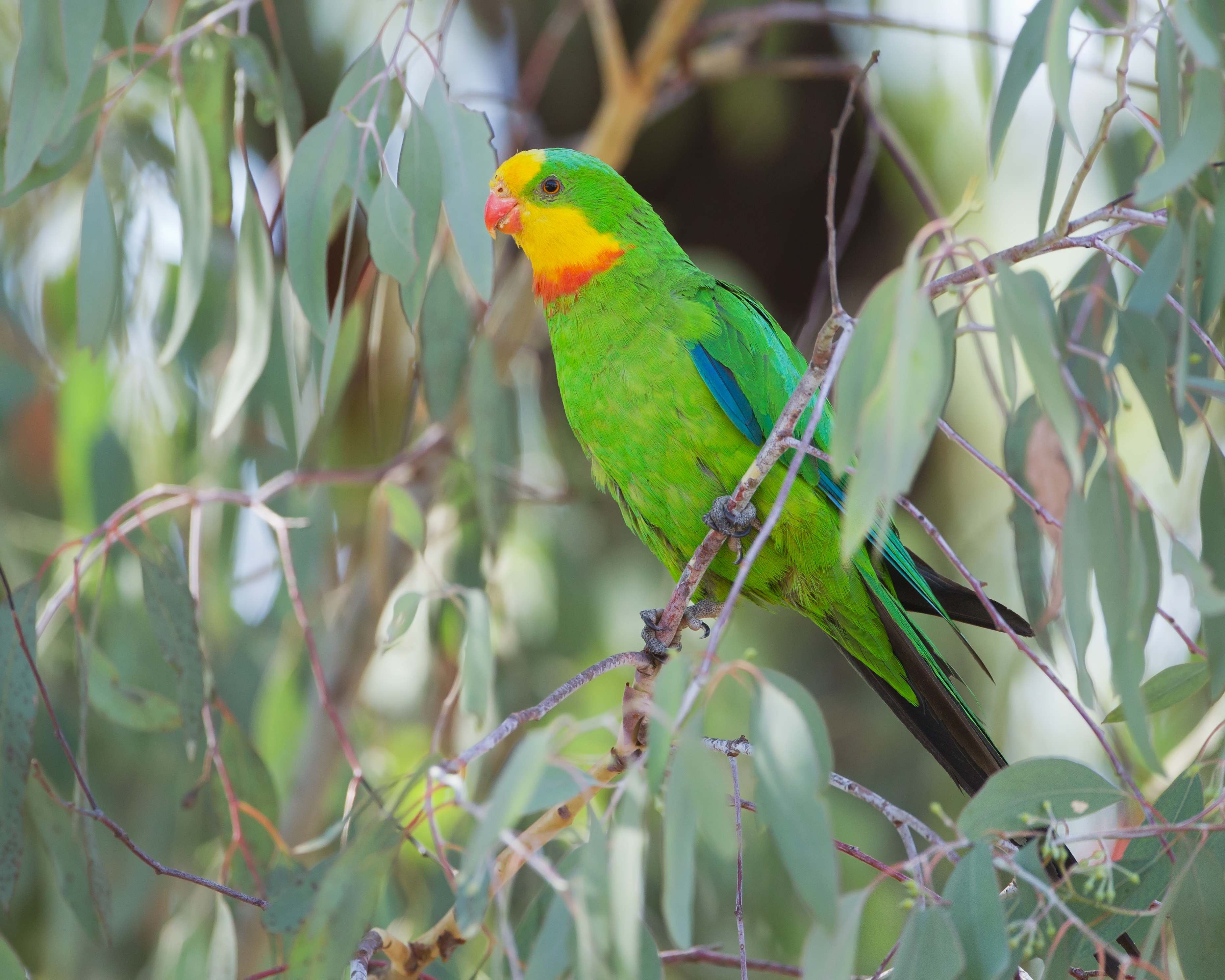
Suberb parrot. Image credit: JJ Harrison, Creative Commons
Most of this ecoregion has been completely altered through wheat farming or severely degraded through heavy livestock grazing and salinization. Only remnant natural woodlands remain, most restricted to rockier areas and riverine forests that are less suitable for agriculture. Overgrazing and trampling has fundamentally changed soils and plant communities over vast areas. There has been a shift towards more disturbance-tolerant tussock grasses. Many introduced predators, such as fox and feral cats and pigs, prey on wildlife that remain in the altered landscapes or in reserves. Introduced herbivores such as horses, goats, and rabbits, degrade natural vegetation.
The extreme fragmentation of native habitats has facilitated the incursion of aggressive native species, such as noisy miners (Manorina melanophrys) and Australian ravens (Corvus coronoides), into remaining pockets of habitat. Many of the last remnants of natural vegetation are protected as nature reserves, such as Cocoparra National Park and Jimberoo National Park, Macquarie Marshes, Murrumbidgee National Park, Chowilla Regional Reservem, and Barmah National Park.
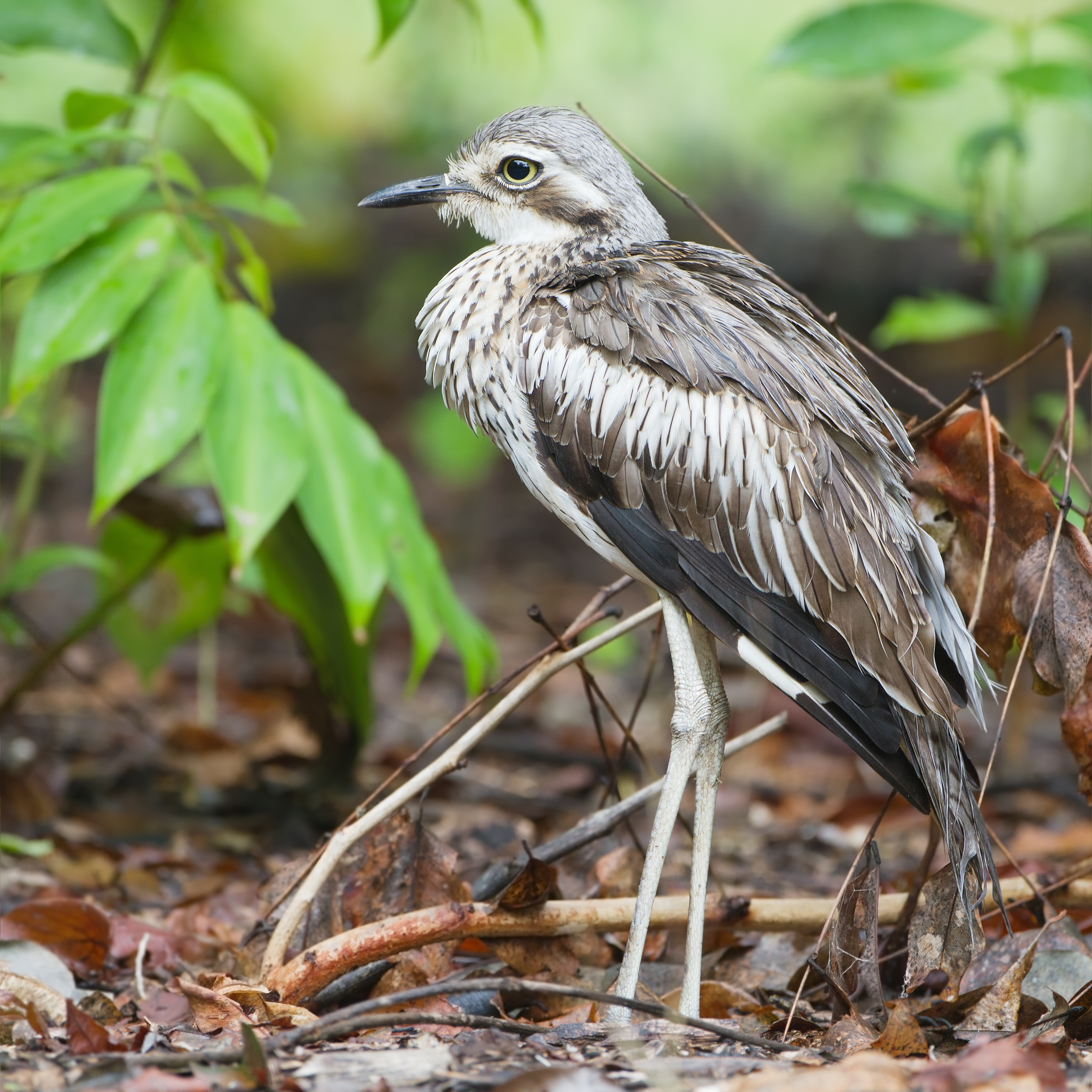
Stone curlew. Image credit: JJ Harrison, Creative Commons
The key conservation actions for the next decade are to: 1) implement conservation programs that focus on private lands due to the small, fragmented nature of remaining native vegetation to protect remaining populations of threatened native species; 2) ensure strong introduced predator, introduced herbivore, and invasive weed control programs in the most important remaining natural habitat blocks; and 3) restore sections of the Darling River with flow regimes and riverine forest, where possible, to provide refuge for threatened freshwater fauna and waterfowl.
Citations
Hodgkins D, D Goldney, G Watson, G Tyson. 2000. The attitudes of landholders to a range of environmental issues, including the values of remnant bushland in the central western region of New South Wales. Pages 336–350 in RJ Hobbs, CJ Yates (editors). Temperate Eucalypt Woodlands in Australia: Biology, Conservation, Management, And Restoration. Surrey Beatty & Sons, Chipping Norton, New South Wales, Australia.
Norton TW. 1996. Conserving biological diversity in Australia's temperate eucalypt forests. Forest Ecology and Management 85:21-33.
Sivertsen D, PJ Clarke. 2000. Temperate woodlands in New South Wales: a brief overview of distribution, composition, and conservation. Pages 6–16 in RJ Hobbs, CJ Yates (editors). Temperate Eucalypt Woodlands in Australia: Biology, Conservation, Management, And Restoration. Surrey Beatty & Sons, Chipping Norton, New South Wales, Australia.
